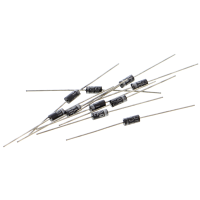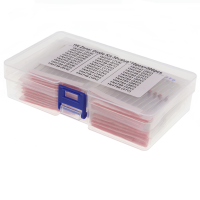Diodes: electronic semiconductors in microelectronics
The function of diodes is fundamentally similar to that of electronic resistors. Diodes limit the current within a circuit. Unlike sheet resistors, however, regular diodes limit current in only one direction of flow - completely. Diodes function as insulators up to a certain voltage threshold. If this threshold is exceeded, the component is usually destroyed. If you imagine the components pictorially, diodes can therefore also be compared to a one-way street.
In order for a current to pass within the diode, the two poles (the anode and the cathode) of the diode must be aligned accordingly (+/-).
Because of their physical properties, diodes are primarily used to convert AC voltage to DC voltage.
What are the properties of my diode?
If you look at the diode itself, you will find an imprint on it. This imprint indicates in volts up to which voltage the diode can be used as a single-ended insulator. The black or white ring on the diode marks the cathode ("-") of the component.
If you have any questions regarding the use of diodes, please do not hesitate to contact us.



